The Big Dumb City After the Flood
“At first, Mermaid Flotilla seems like another tired variation on the ‘low-impact foodboat’ trend, down to the repurposed tug and biofluorescent strip lighting. But then you taste the braised mock bluefin tuna with lemon-tarragon crème fraîche. And while this reviewer has never tasted real bluefin, it’s hard to imagine the real thing could best this — there’s nothing mock about the intensity and flavor.”
Watching "The Challenge" in the Presence of Gods
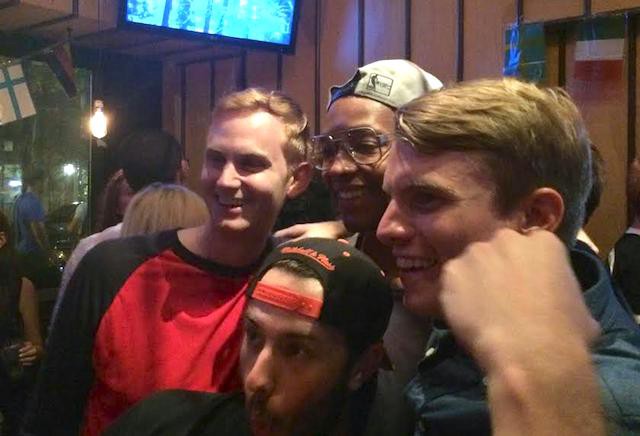
The whole day had been hot and sticky, in the high 70s and low 80s, one of the first truly gross New York summer days of the year, and yet Laurel and Devyn, two finalists on this season of The Challenge (formerly Real World/Road Rules Challenge) smelled fantastic. My friend wouldn’t stop talking about it. I couldn’t think of more than two questions to ask them, so eventually we asked Devyn what perfume she’s wearing. “Marc Jacobs Daisy!” she said, briefly looking up from her phone, where she was live-tweeting the finale.
This was the 25th season of The Challenge, which has been pitting former cast members of The Real World and Road Rules, along with a few native additions, against each other since 1998. Road Rules, the neglected step-sister of The Real World, aired its final season in 2007, and though its former cast members kept appearing on The Challenge for a few years after that, eventually they grew up and moved on, and The Challenge couldn’t very well be called Real World/Road Rules Challenge anymore with no members of Road Rules involved. So now it’s just The Challenge.
Each season features a different array of cast members from the long and storied history of The Real World, all living in a giant house together in some exotic locale (Thailand! Prague! Colorado!). There are several different types of seasons: team seasons, partner seasons, and individual seasons. Sometimes the teams are decided based on personality (the “good guys” versus the “bad asses”); sometimes they’re split up by which season they originally appeared on; sometimes they’re decided by history (these are some of the best seasons: Rivals featured same-sex pairs that have had an ugly history with each other, while Battle of the Exes featured male/female pairs that have hooked up on camera); and sometimes they’re done schoolyard style, with captains picking teams. Sometimes there are sequels that use the same rules, as in the three installments of The Gauntlet and The Inferno. Sometimes they are one-offs (as in the Survivor-ripoff season The Island, which was…not good). This season, Free Agents, is a hybrid: an individual season, but most of the missions require a randomly chosen group or pairing.
A typical modern episode has one challenge in which everyone competes. These range from puzzles to “extreme” sports (bungee jumping, say) to creative riffs on races to wrestling matches. Somehow, people are picked to go into an elimination round, which has a scary name like “the Gulag” or “the Arena.” Sometimes the losers of the challenge go in, other times people vote them in. The people in the elimination round battle to stay in the game; loser goes home. Eventually only a few people are left in the house for the grueling final challenge. The winner gets a lot of money, of course. In between the challenges, the cast members fight and party and play pranks and work out sexily and hook up with each other, also sexily.
It is, as Price Peterson noted in an excellent essay for Gawker, one of the truly great reality shows in the history of the genre, but it has changed over the years, and not just in name. The early seasons were much less cutthroat: In the fifth season, Battle of the Seasons, the finalists created a contract stipulating that the winners of the final challenge would kick back some money to the losers so that nobody went home empty-handed, which would never happen in a modern season. The missions tended to be goofier and funnier. But as The Real World changed from an episodic documentary about interesting people to a let’s-put-hot-people-in-a-house-and-watch-them-fight-and-fuck series only a half-step removed from unrepentant garbage like Bad Girls Club (which I also love), The Challenge changed too. These days they are more like a CrossFit tournament than anything else — raw strength tends to win the day.
The final challenges, in which the remaining six or so competitors compete to find out the ultimate winner of the season, are designed to break the cast members physically and mentally. This season’s was a two-day trek up to the peak of Villarrica, an active volcano in the Chilean Andes. The first day, the six finalists, three of each gender, had to kayak down a very hazardous white-water river, then hike for miles through the thin air, then climb up the sheer cliff of a mountain using climbing equipment until dark, at which point they had to complete a 25-mile stationary bike ride in below-freezing temperatures before they could sleep. The next morning, equipped with ice axes and those spiky ice climbing boots, they were tasked with summitting the volcano, more than 9,300 feet above sea level. Most of them cried.

I watched the finale in a private room in the back of a sports bar in Union Square called Sidebar; I’d seen on Devyn’s Instagram account that she and Laurel would be appearing there for the finale. My friend and I got there an hour early and plopped down in front of two giant projector screens that were playing, for some reason, a rerun of the US v. Germany World Cup match from earlier that day. It’s a typical Manhattan sports bar: giant TVs, dudes in either untucked button-downs or v-necks, stacked pitchers of Bud Light, $10 mixed well drinks. Bartenders in Daisy Dukes and tank tops. Thumping club music boomed out of speakers. Within ten seconds, a very short man in a striped shirt asked my friend, “So, where are you from?” After my second drink, I went to the bathroom, where a fat, Australian twentysomething told another Australian twentysomething that he needed to “get the sand out of his vagina” and “close the deal” with a girl at the bar. The word “vagina” sounds very funny in an Australian accent.
At 10:05, five minutes after the show began, and with no sign that anything Challenge-related was happening in this bar, I started asking around. Nobody was there for The Challenge; several college-aged girls and slightly older men were helpful but confused by the question. Eventually the bartender, with a Budweiser-branded tin bucket full of Budweiser bottles perched on her shoulder, pointed me toward the back room. “Behind the American flag,” she directed.
I have probably never been in an environment less conducive to watching TV. The small, square back room was paneled in wood, with a row of beer growlers and mason jars (empty) lining a narrow shelf just below the ceiling. There were four TVs, one in each corner, but the room was so crowded and noisy that at best you could detect that the cast members were indeed emitting human speech noises from their heads. The final challenge, which involves switching male-female partners and at least six different mini-challenges, is complex, and I could not figure out what was happening or who was winning until TJ Lavin, a pro BMX biker, host of the show, and owner of many wardrobes of teen clothes in adult sizes, announced the winner.
There were probably 30 or 40 people in the room. Among them were four cast members, three of whom competed on the current season, and two of whom just showed up unannounced. Devyn, from Real World Brooklyn, she of the Marc Jacobs perfume and determined live-tweeting, was a finalist this season, to the surprise of some. Not to me, though: She plays the game shrewdly and smartly, winning missions that reward her strengths (like the annual trivia challenge, always one of the best episodes of the season — this year, one competitor answered that the official language of Australia is Dutch, and another, given the question “which continent is the United States in,” said “it’s the word ‘continent’ that’s confusing me” before answering, “the North continent?”) and using her friendships with other cast members to avoid being voted into the elimination round on the more physical missions. She’s funny and self-aware and also not very athletic compared to her muscle-bound competitors, which has prevented her from ever winning, but not from getting very close. Devyn has made it to the finale twice; she’s lost both times, but she was also the only non-athlete to make it to the finale in each season.
During the brutal 25-mile stationary bike section of the final challenge, Devyn was the last person cycling, struggling for hours alone in the middle of the night. At one point, crying, she stopped cycling and put her head down on her arms. The room erupted, chanting her name. (It’s probably worth noting that on the show, Devyn is frequently referred to as athletically useless, an anchor on whatever team she happens to be on. In the real world, as opposed to the Real World, wearing a black dress, Devyn looked to be in better shape than almost anyone else at the bar.)
Laurel was the first cast member I met. She’s tall and beautiful and physically imposing, and stuck out very clearly in the crowd. She also never appeared on any Real World season. At some point, having realized that without Road Rules around, The Real World alone couldn’t supply enough cast members to sustain the much more successful The Challenge, the producers at MTV ran two seasons of The Challenge called Fresh Meat. Fresh Meat paired a veteran competitor ( “alumni”) with a brand-new cast member who’d never appeared on The Real World (although usually these Fresh Meats had tried out for The Real World and not been chosen). In heels, Laurel stands a good few inches over six feet tall, and is one of the most physical competitors in Challenge history. She is kind of awful on the show — petulant and childish, lashing out in the manner of a middle-school bully — but very nice in person. She was happy to tell me about the exorbitant non-disclosure contract MTV has with the cast members to prevent them from spoiling the results (“I think it’s about a million dollars,” she said), and delightedly pointed up at the TV when her partner for that stretch of mission began flagging. “I was so mad at him!” she exclaimed.
Though only Devyn and Laurel were advertised on the flyer for the event, two other cast members showed up. I chatted for a little while with Preston, a soft-spoken, willowy guy from the second New Orleans season (not the one with Julie the Mormon and Melissa), who had competed on this season of The Challenge and done pretty well, considering that he is a normal human and not a giant, man-shaped pile of rocks. Preston’s major storyline on TV was an ongoing battle with an aggressive and borderline homophobic cast member named Knight. (Preston is a twofer in the hyper-acute identity structure of The Real World: black AND gay!) Wearing big eighties wire-rimmed glasses and a backwards baseball cap, he obliged requests for pictures but didn’t seem thrilled with the attention. When I asked him if he enjoyed doing things like this, he immediately answered, “No!”
I didn’t speak to Marie, a brash Staten Islander from the St. Thomas season of The Real World, but she was there too. St. Thomas was a bizarre little late-period season. Usually the The Real World is set in a city, to provide stimulation to the cast and also to provide some culture shock to the couple of cast members who inevitably are plucked from small towns. But the St. Thomas season took place not even in the Virgin Islands’s tiny capital city of Charlotte Amelie but on a tinier, nearly uninhabited island only accessible by boat. The cast members of that season mostly just hooked up with each other, for want of something else to do. Marie works in sales at the medical startup ZocDoc, as does Devyn. There was a substantial ZocDoc contingency at the bar, in fact. I spoke briefly to Devyn and Marie’s boss, who told me that Devyn is “just great.”
The crowd only halfheartedly watched the episode, perhaps because most of the room was affiliated with the cast members in some way — friends, co-workers — so they already knew what’s going to happen. Instead people mostly gathered around the cast members, taking photos and chattering excitedly. Laurel was handed an entire pitcher of a dark liquid that may or may not have been a truly massive rum and coke lined with lime wedges, which her assistant, or friend, or something, held for her when she wasn’t sipping at it through an equally enormous straw. Every so often, somebody came in with a tiny saucer holding shots of tequila and slices of lime for the cast members. Laurel and Devyn worked the room expertly. They aren’t pampered and prepared like non-reality celebrities, and don’t speak in press-release riddles. They are our representatives, the people we could be: Just a bit famous but still “real” — in better shape and better-looking, but still approachable, the kind of people other people want to meet.
Two 23-year-olds, Melani from Suffern, New York and Michelle from Hoboken, came out to the city just for this. “We’re huge fans,” Melani told me. They posed with each of the cast members for a picture, clutching beers. “Have you watched the show for awhile?” I asked in between photos. “I guess so,” she said. I decided not to ask her for her thoughts on the Miz or Timmy or Veronica or Coral, cast members from a decade or longer ago. I felt like maybe she is not as big a fan as I am. I have purchased bootleg DVDs of old, unreleased seasons from a grey-market version of eBay, from a seller in Missouri named “lilturtlebug,” because MTV refuses to release them, since the music rights are too expensive to make releasing the seasons on DVD worth it. I felt like Melani would think this is weird.
My friend and I left as soon as the episode was over because the back room was too hot. We agreed that we would have to watch the episode again because we’d missed all the finer points of the finale of what had been a very good season. We made a date to watch it together, but I knew I would download and watch it as soon as it was available. I will pretend not to have seen it.
Dan Nosowitz is a freelance writer/editor who lives in Brooklyn.
New York City, June 26, 2014
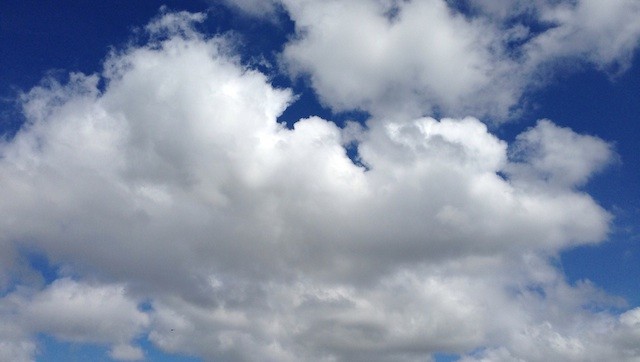
★★ The clouds deserved a better day underneath them. They were clean white and voluminous in the morning, with deep blue between them. But the air made for difficult breathing; the Citi Bike rack was full. The clouds continued regardless, all through the day: now showing blazing white edges, now piling textured grays on grays, now sending a cotton-pure scout into an open expanse of uptown sky. They heaped themselves up in the west to escort the sun through its lingering descent, darkening themselves into blues, opening a glowing tunnel mouth lined with gold. A silhouetted airplane passed across them. A pink glory ray went angling upward like a spotlight, and then a hot glow suffused the whole underside of the mass. The tunnel opened wider and filled with chopped gray. Then the lurid lights passed, and what was left was sharp pale patterns like frost prints on a window.
How to Be a Black Country Star
by Casey N. Cep
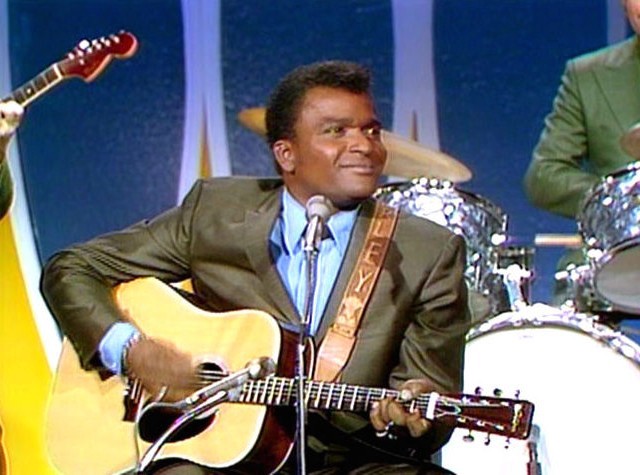
The Statler Brothers were a gospel band most famous for the years they spent as Johnny Cash’s backup singers and opening act. In 1979, they released a song called “How to Be a Country Star.” “There’s questions,” it began, “we’re always hearing everywhere we go: like how do I cut a record or get on a country show?”
Their comical answer was a rambling list of what today we’d call shout outs: “learn to sing like Waylon or pick like Jerry Reed,” “put a cry in your voice like Haggard,” and “get a hip band like Willie.” On and on the song goes, naming more names than a teacher on the first day of school. Near the end of the role call, they suggest: “Get a gimmick like Charley Pride got and you’ll be a country star.”
Charley Pride’s “gimmick,” as everyone knew by 1979, is that he is black. No one knew that in 1966, when Pride’s first single was distributed to country stations without publicity photographs. His agent feared that if disc jockeys knew Pride’s race they wouldn’t play his music. A reasonable fear in a genre that only last year seemed to suggest that the song “Accidental Racist” might constitute a meaningful conversation about race.
Somehow, by 1967, only a year after his first single, Pride was performing at the Grand Ole Opry. In 1971, he was named both Entertainer of the Year and Male Vocalist of the Year by the Country Music Association: a rare honor reported by the Associated Press under the headline “Pickin’ A Guitar Instead of Cotton Pays Off For Singer Charley Pride.”
That year, Pride had released his most popular song. In two minutes and only 137 words, “Kiss an Angel Good Mornin’” topped the charts and brought Pride’s baritone voice into some of the most intimate spaces in America: automobiles and living rooms, wherever radios were tuned to country stations.
The song is a little like a hymn. Not because it has any gospel themes — it’s quite clearly about what Pride calls “a woman and a man in love” — but because it’s most beautiful if you already believe. I’ve always thought that love was itself a rehearsal of faith, in the way that there are things in which you only find meaning — a few things in which you only find joy, if you’re already in love. If you’re not already in love, then a song like this seems saccharine, even a little silly, the way that a hymn can sometimes seem to those outside the church.
The song opens with Pride smiling like a jack-o-lantern, so enthusiastically that friends ask him why. “And every time they ask me why, I just smile and say: ‘You’ve got to kiss an angel good mornin.’” There you have it. No consternation; no complications. Just an angel to call your own, and all you have to do is kiss her and “let her know you think about her when you’re gone.” Just “kiss an angel good mornin’ and love her like a devil when you get back home.” No confusion; no conflict. There you have it.
The song is an autostereogram that only those already in love can see. “People may try to guess the secret of happiness,” Pride sings, “but some of them never learn it’s a simple thing.” Pride would record thirty-five other number-one songs, but it was “Kiss An Angel Good Mornin’” that made his career, which is itself a kind of puzzle.
Like the actual black cowboys of the American West, black performers in country radio are largely forgotten. When Darius Rucker, of Hootie and the Blowfish fame, took his song “Don’t Think I Don’t Think About It” to the top of the country charts in 2008, many were shocked to learn Charley Pride had gotten there first, in 1971, and that Pride had been there as recently as 1983. Just as when Pride first performed at the Grand Ole Opry in 1967, many were shocked to learn DeFord Bailey had beaten him there, playing his harmonica on that stage from 1927 until 1941.
Having made a career in country music, Pride seemed more troubled by the barriers between musical genres. In 1977, he told a reporter, “A whole bunch of the 20 million blacks in America are out there waiting to enjoy Charley Pride.” That was after a black radio station in Chicago had invited him into the studio, interviewed him, and then played one of his records, only to announce that they would not play his music again.
“It seems like if you’re a country singer, they feel they’ve got to make you suffer for it, because you started out as a country singer,” Pride explained. He protested the “separatism practices” of radio stations, even as the reporter could not help but mention how “an ex-baseball player from Mississippi entering country music just as race riots rocked Detroit and Newark” was “understandably silent on the subject of race.” Born to a sharecropper in Sledge, Mississippi, Pride played in the Negro American League and served in the Army before moving to Nashville.
He had grown up listening to country music, and that’s where he got his break, even though he insisted his music wasn’t only country. Listen to “Kiss An Angel Good Mornin’” and you’ll understand why: the beat and the baritone are clearly country, but there’s something else, just a little kernel of corn just waiting to pop in the lyrics. The song’s been covered by Conway Twitty and Alan Jackson, but you could easily imagine Rod Stewart or Barry Manilow kissing that same angel.
Casey N. Cep is a writer from the Eastern Shore of Maryland.
Not All Medical Marijuana
It’s weird that people would just say that marijuana is good for some ailments without any data to back that up at all, huh:
The dearth of data has not prevented legislators and voters across the nation from endorsing marijuana for more than 40 conditions. Patients with rheumatoid arthritis, for instance, qualify for marijuana treatment in at least three states.
Yet there are no published trials of smoked marijuana in rheumatoid arthritis patients, said Dr. Mary-Ann Fitzcharles, a rheumatologist at McGill University who reviewed the evidence of the drug’s efficacy in treating rheumatic diseases. “When we look at herbal cannabis, we have zero evidence for efficacy,” she said. “Unfortunately this is being driven by regulatory authorities, not by sound clinical judgment.”
Buckshot & P-Money Feat. T'Nah Apex, "Sweetest Thing"
Brooklyn emcee Buckshot works with P-Money, whose soft, deep production ties a nice loose knot around this track, then T’Nah Apex steals the entire thing about a minute in. The whole album is on Spotify and Rdio and all the rest, take it with you this weekend. [Via]
Body Unbeaten
Ronald Herron, better known as the rapper Ra Diggs, “beat a body” once. He did not this time: The Gowanus Houses drug kingpin was convicted by a jury of three murders — including the one he had ducked in state court — and a number of drug and racketeering charges.
Internet, Why So Blue?

Children ask why the sky is blue, and there usually isn’t anybody around to provide a satisfying answer. The sky is blue because… the atmosphere? And gases. The sky is blue because of the air and the Sun. The sky is blue because the sky is blue, and it’s time to go to school. Maybe they’ll tell you there.
But what kind of child would look at the sky today, when there’s so much going on down here? The sky suggests infinity but the little screen on dad’s phone seems to supply it. What is the answer, then, when a child asks: Why is the internet blue?
The blue at the top of this post is a Google blue. It’s not the only Google blue, just the Google blue you see the most. How was it chosen? Another blue, a slightly different Google blue, the story goes, was selected by a designer who liked how it looked. But this designer was told by a manager that this blue was the wrong blue: Another blue, testing revealed, had resulted in more clicking. Their boss intervened. 41 blues, between the nice blue and the powerful blue, were tested for efficacy. One prevailed.

Twitter blue is known in Twitter’s official branding guidelines as Twitter Blue. Some birds are blue and Twitter’s logo is a bird. Twitter’s logo wasn’t a bird until someone pointed out that it should be, because Twitter’s name is Twitter, and Twitter agreed. But birds are also red, and brown, and black.

A designer for Tumblr says Tumblr is blue, and “dark,” because nobody notices blue. “Everything’s blue,” he says. “Posts are bright on that blue background and lifted up with shadows.” Blue is for the parts you “don’t need immediately.” You can make your Tumblr any color you want; it will appear that way to you, and to people to come directly to your page on their own. Your Tumblr doesn’t have to be blue until it shares space with others.
On the dashboard, everyone is trying to be noticed, but everyone is blue.

This is Instagram blue.
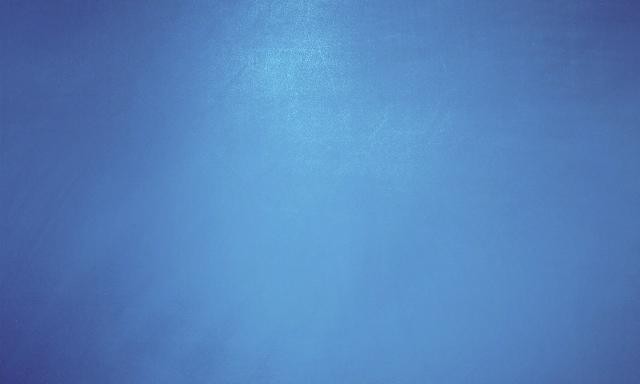
This is Instagram blue after treatment with the “Hudson” filter, which is itself tinted blue.

It takes time for languages to accommodate the full spectrum of visible color. Words for black and white usually appear first, because they are nearly synonymous with light and dark. Maybe then red and green, then blue. Is this because blue objects are rare in nature? But water, and the sky. Homer described both, but never called them blue:
Rather than being ignorant of color, it seems that the Greeks were less interested in and attentive to hue, or tint, than they were to light. As late as the fourth century BC, Plato named the four primary colors as white, black, red, and bright.
Color connotes time, and LinkedIn blue connotes the 90s, when job hunting was a lot more fun. Maybe LinkedIn users are less interested in and attentive to hue, too. The sea is winelike; LinkedIn is joblike.

Microsoft blue, a new blue, is the loudest blue, because who would ever wonder why Microsoft is blue? Microsoft blue is Weezer blue.

In an interview a few years ago, Mark Zuckerberg explained why Facebook is blue:
Colors don’t matter much to Zuckerberg; a few years ago, he took an online test and realized that he was red-green color-blind. Blue is Facebook’s dominant color, because, as he said, ‘blue is the richest color for me — I can see all of blue.”
His version of the internet is profoundly blue, bluer than any internet before, for a reason he didn’t realize was personal until long after the decision was made. It had been fortunate for him, a young citizen of the internet, that links, traditionally, are blue. But why are links blue? Did he ever ask?
The man who invented links was writing them to a grayscale screen. The first popular browser, Mosaic, later turned links blue because it was the darkest color available at the time that wasn’t black; they needed to stand out, but only just. Blue was the best alternative. Blue always survives the focus group. Blue wins the a/b test. Which is convenient, because blue is usually already there.
Why is the internet blue? The internet is blue because… the atmosphere? And gases. The internet is blue because of its air and its Sun. The internet is blue because the internet is blue, and it’s time to go to school. Maybe they’ll tell you there.
Why Michael Bay Can't Lose
Why Michael Bay Can’t Lose
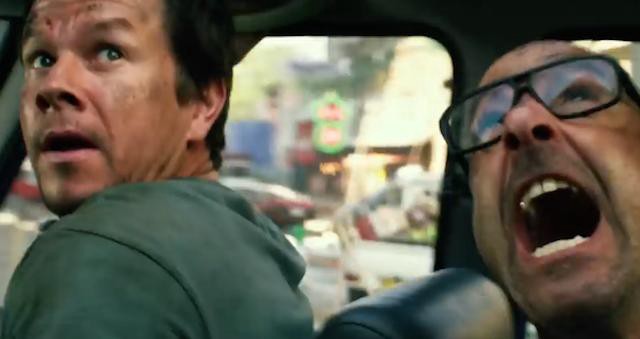
There’s a fascinating pattern in the first Transformers reviews:
There is nothing to watch here, nothing to grab onto or hook into in even the simplest of ways. I staggered out of the theater feeling assaulted and insulted, but by the time I was standing out on 42nd Street in the muggy summer evening air, even those angry feelings had passed.
Richard Corliss agrees: “The final half-hour devolves into a kind of abstract-expressionist chaos, with commercials. Nothing coheres.” At IndieWire, Eric Kohn complains that Michael Bay “constructs a barrage of showdowns remarkable for their ridiculous propensity to feature explosions and slo-mo, gravity-defying feats. They’re all unmemorable but equally loud and visceral.” The movie isn’t just bad — nobody going into any of these reviews expected anything else — it’s impossible to engage with critically, or to even remember, like a trauma or an accidental nap or the ten seconds after you hit the snooze button. It’s tempting to blame the movie’s attempts to appeal to an international audience, but even that seems backwards: Captain America, the highest grossing American film in China so far this year, was coherent and smart and about Captain America. You can’t translate a thing you can’t parse in the first place. Maybe you don’t need to!
Another pattern: Not one review on the Rotten Tomatoes page for Age of Extinction, as of Thursday night, was assigned to a woman. What does it mean? Or wait, is this, too, impossible to engage? Two thumbs in all directions for Michael Bay! At least Snowpiercer is supposed to be good.
